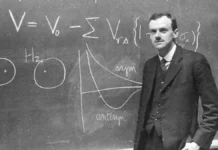
Albert Einstein used to say that imagination is more important than knowledge; knowledge is limited while imagination embraces the whole world, stimulates growth, and leads to success and development. HG Wells was one such great man, Some of whose dreams became actual events.
Contents
Life of HG wells
HG Wells, whose full name was Herbert George Wells. He was a writer of excellent science fiction stories. Wells was born on 21 December 1866 in Bromley, Kent, England. Wells was from a lower-middle-class family and spent most of his time playing cricket and staying in his father’s small shop. Wells received education in Physics, Chemistry, Biology, and Astronomy, among other subjects, securing a general school scholarship.
In 1874, young Wells broke his leg in an accident that left him unable to walk. For spending time, Wells usually read books. So he started spending most of his time reading books, encouraging his desire to write. After a complete recovery, Wells went through many troubles to recover his family’s financial situation and found himself unable to in many places. Thus Wells devoted himself to becoming a writer.
The Chronic Argonauts
During his college days, Wells published a short story about time travel called “The Chronic Argonauts,” in which he reflected on future literary success. Then, in 1895, Wells became famous around the world overnight with the publication of a story called The Time Machine; this book was about an English scientist who developed a time machine and traveled back in time.
It was unbelievable that Wells would be able to write a book like The Time Machine because, in the 1890s, physics was only according to Newton, and no one knew about the law of relativity; ten years later, Albert Einstein proved Wells’s fictional story of time travel in his particular theory of relativity.
The Invisible Man
In 1897, Wells published another book, The Invisible Man. In this book, Wells clarifies that what if humans become invisible? (Wells was inspired to write this story under the seafloor, where some creatures are hidden, such as jellyfish). Professor Zhang Xiang and his colleagues at the University of California, Berkeley, are working on the invisible principle and have achieved some success in this work. They have created an object called Metamaterials. It is a carpet-like object from which light reflects in such a way that it appears invisible.
The war of the worlds
It was 1895 when 29-year-old Wells was working on his new story. He lived in an era when the first motion camera was invented, and the latest transport vehicle was a bicycle. Nevertheless, Wells was still engaged in his imagination, how he could turn the future pictures of the destruction of the world into a story. The name of the novel was The War of the Plants. In this novel, Wells writes about how aliens from Mars come to Earth to destroy human life with a military force – Heat Rays.
Wells created a new type of imaginary science and correctly predicted a new kind of war. However, in 19 years, Albert Einstein identified the theoretical basis of laser technology, and today Laser technology can be seen everywhere in the modern era. From Pointing Devices to DVD players, from industrial to modern surgical instruments and laser technology is being developed even more in modern warfare.
Wells used to say, “Destruction is not an external force but a dark nature born within us.” So how do we become capable of creating extraordinary inventions?
In 1898, Wells continued writing various novels, and in the early twentieth century, many stories of Wells began to touch on the mechanized brutality of war. Wells described the tank-like military weapon in The Land Ironclads, which are used in military warfare. He predicts aerial combat in some of his novels. In the Shape of Things to Come, six years before World War I, in many ways, Wells was expecting World War I through his books. World War I was fought six years after the publication of Wells’ novels, and his predictions came true.
Unlike all his science fiction novels, in 1914, he published “The World Set Free,” in which Wells writes about a physical scientist who came up with the idea of the Atom Bomb in 1933. In this story, Wells writes about a military force that operates with radioactivity and how its use can lead to the destruction of the world, but there is still a lot of time left to use nuclear weapons in World War II.
The Shape of Things to Come
In 1920, Wells shifted his focus from destruction to creative techniques and began making films in the cinema. Wells released a science fiction film, The Future of Metropolis, in 1927, which earned a name in the world of cinema, and in 1936 made a film on the Wells novel The Shape of Things to Come, which featured an air war of the future 1940s. The scenes depicted in the Wells film The Shape of Things to Come came true in World War II.
In 1945 America fell an atomic bomb on Japan, based on the radioactivity theory of Wells. Wells believed science was the most powerful tool but warned us to use it wisely.
HG Wells Death –
HG Wells died of unknown causes on 13 August 1946 at the age of 79; some reports also stated that he died of a heart attack at a friend’s flat in London. In his preface to the 1941 edition of The War in the Air, Wells stated that his episode should be: “I told you that, you damned fools.” The body of Wells was cremated at the Golders Green Crematorium on 16 August 1946. His ashes were later scattered across the English Channel “Old Harry Rocks.” A commemorative blue plaque in his honor was installed at his home in Regent Park in 1966.
Wells left behind a rich legacy of science fiction stories that will always entertain and inspire us.
FACT CHECK: We strive for accuracy and fairness. But if you see something that doesn’t look right, please Contact us.
DISCLOSURE: This Article may contain affiliate links and Sponsored ads, to know more please read our Privacy Policy.
Stay Updated: Follow our WhatsApp Channel and Telegram Channel.













